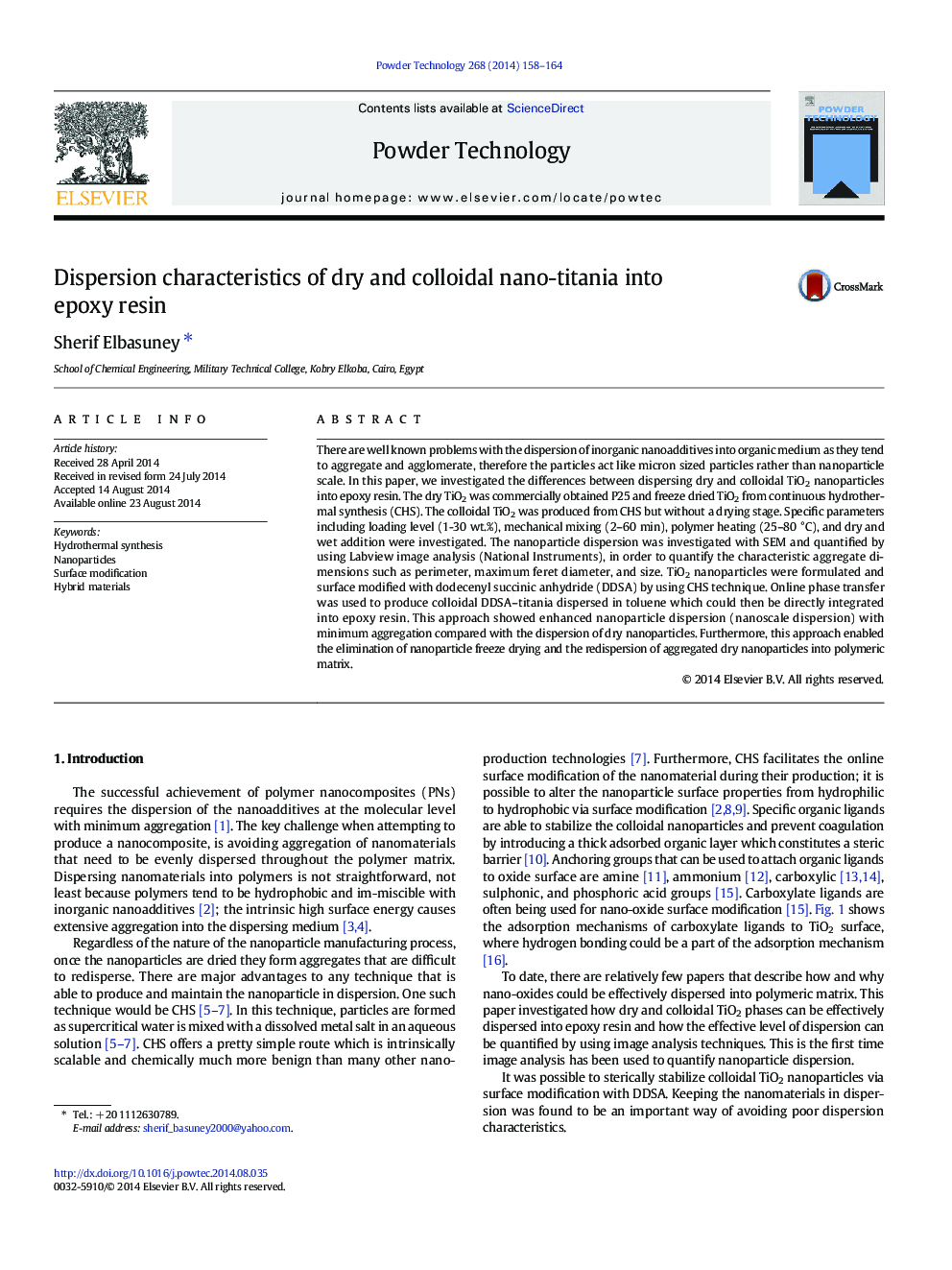| کد مقاله | کد نشریه | سال انتشار | مقاله انگلیسی | نسخه تمام متن |
|---|---|---|---|---|
| 235945 | 465654 | 2014 | 7 صفحه PDF | دانلود رایگان |
• The potential of using image analysis to quantify nanoparticle dispersion.
• Different potential factors that could affect dry nanoparticle dispersion.
• The continuous synthesis and surface modification of TiO2 nanoparticles.
• The real development of nanocomposites with enhanced nanoparticle dispersion.
There are well known problems with the dispersion of inorganic nanoadditives into organic medium as they tend to aggregate and agglomerate, therefore the particles act like micron sized particles rather than nanoparticle scale. In this paper, we investigated the differences between dispersing dry and colloidal TiO2 nanoparticles into epoxy resin. The dry TiO2 was commercially obtained P25 and freeze dried TiO2 from continuous hydrothermal synthesis (CHS). The colloidal TiO2 was produced from CHS but without a drying stage. Specific parameters including loading level (1-30 wt.%), mechanical mixing (2–60 min), polymer heating (25–80 °C), and dry and wet addition were investigated. The nanoparticle dispersion was investigated with SEM and quantified by using Labview image analysis (National Instruments), in order to quantify the characteristic aggregate dimensions such as perimeter, maximum feret diameter, and size. TiO2 nanoparticles were formulated and surface modified with dodecenyl succinic anhydride (DDSA) by using CHS technique. Online phase transfer was used to produce colloidal DDSA–titania dispersed in toluene which could then be directly integrated into epoxy resin. This approach showed enhanced nanoparticle dispersion (nanoscale dispersion) with minimum aggregation compared with the dispersion of dry nanoparticles. Furthermore, this approach enabled the elimination of nanoparticle freeze drying and the redispersion of aggregated dry nanoparticles into polymeric matrix.
The successful achievement of polymer nanocomposites requires the dispersion of the nanoadditives at the molecular level with minimum aggregation. This paper reports the continuous manufacture and surface modification of TiO2 nanoparticles and the real achievement of epoxy nanocomposite with enhanced nanoparticle dispersion by integrating colloidal nanoparticles directly into the polymeric matrix.Figure optionsDownload as PowerPoint slide
Journal: Powder Technology - Volume 268, December 2014, Pages 158–164
